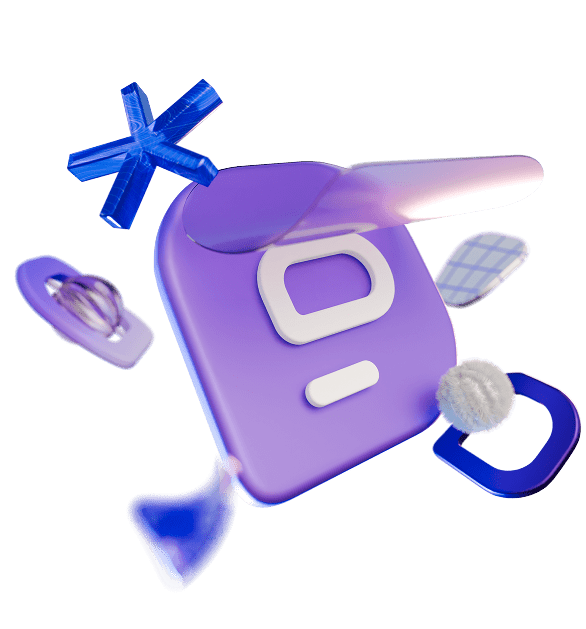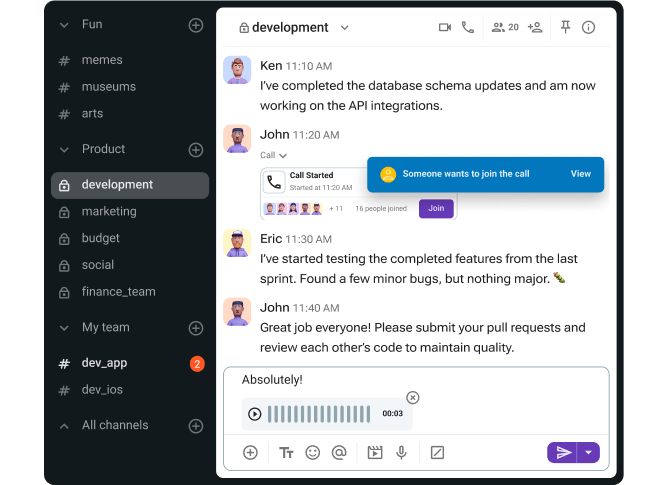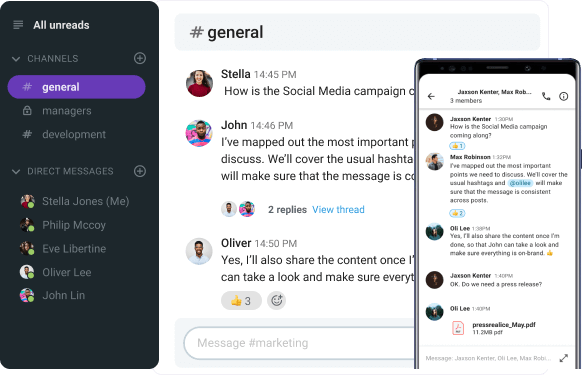It’s been a few days since you last heard from a coworker in charge of a critical project implementation. The deadline is approaching, and you plan to contact them for the latest update.
You’re trying your best to resist the urge to use phrases like “A gentle reminder” or “Just checking in” in your emails or team messages.
But how do you politely ask for an update without sounding overly insincere?
If this conundrum sounds familiar, you’ve come to the right place.
In this blog post, we’ll:
- Define update requests,
- Outline different types of update requests at work,
- Detail key steps to crafting a professional update request, and
- Offer examples of asking for a status update politely.
Let’s get started!

Table of Contents
What is an update request?
An update request is a written message sent to a person you have communicated with before about a previously discussed matter.
Commonly referred to as a “follow-up message” or “email”, the update request is a standard practice in modern business communication.
In most cases, professionals use email to request a formal update.
However, with the rise in team communication technology, many organizations have switched to business messaging apps for internal and external communication.
For example, employee communication apps like Pumble support fully managed guest access. This feature allows organizations to move away from email altogether, even for third-party communication.
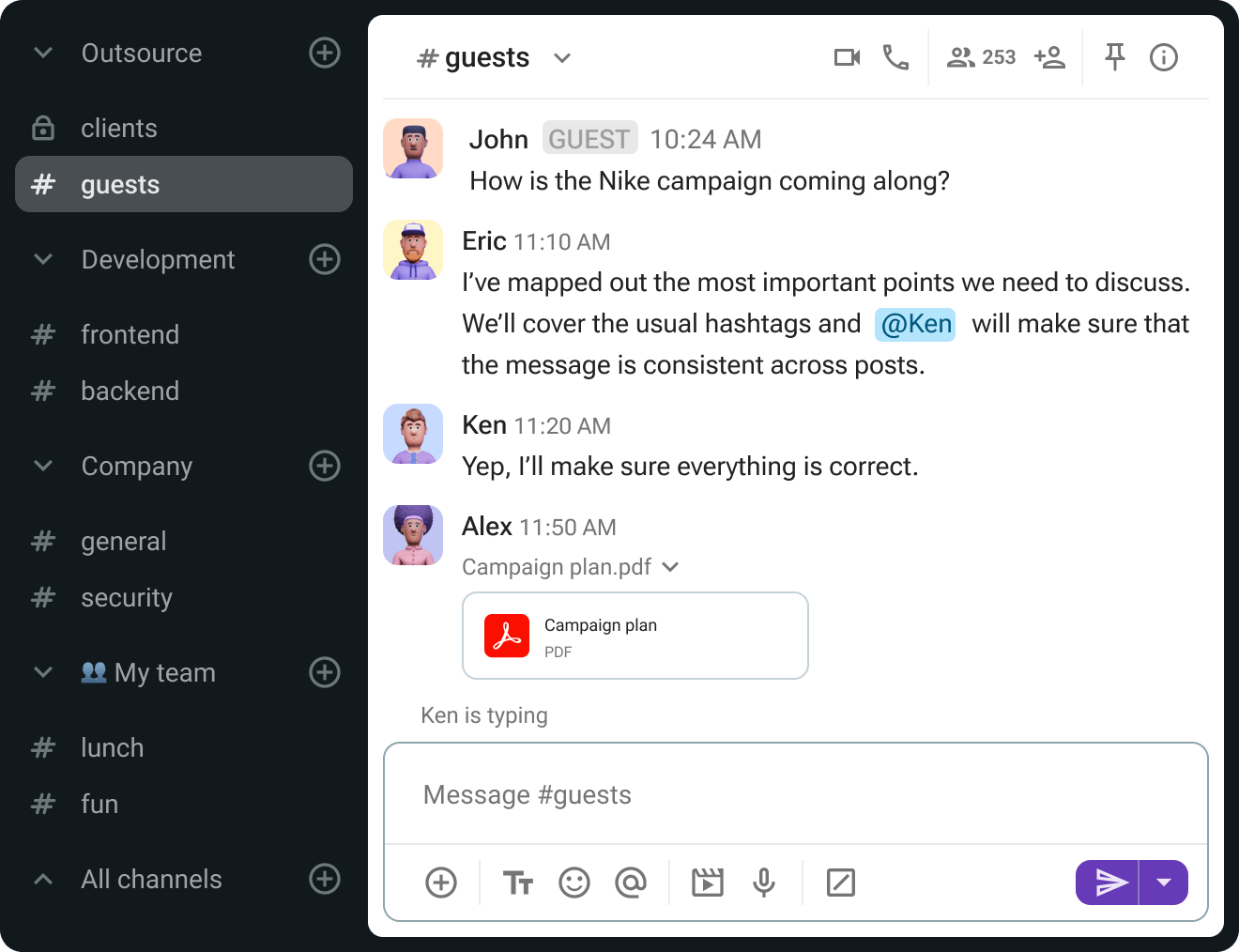
Communicate internally and externally over Pumble
Each time you write to a coworker or a client requesting information or action, you’re crafting an update request.
Asking for updates and responding to update requests are some of the most common business writing activities you’ll do, regardless of your industry. So, optimizing these types of work messages is crucial for anyone looking to meet professional standards.
💡 Pumble Pro Tip
To learn how to improve your professional business communication skills, check out the following article:
Types of update requests at work
Depending on the specific work situation and the relationship with the person you’re requesting an update from, we can distinguish the 5 main types of update requests you may encounter in workplace communication:
- Follow-up after a job interview — A thank-you note or a follow-up sent to a hiring manager expressing gratitude and interest in the company and the position you interviewed for.
- Status update request — Asking a coworker or a third-party contractor about tasks or project progress updates.
- Reminder about an event or a deadline — A brief note to remind your team members about an important deadline that’s coming up or a quick reminder about an industry event sent to people you network with.
- Catch-up — An email or a message sent to people from the industry you network with to catch up and keep the conversation going, or a quick email sent to a sales lead to continue building the connection.
- Thank you — An email or a message sent to coworkers, connections, clients, partners, or leads to express gratitude for their help, time, great work, or connection.
How to politely ask for an update at work
Now that you know what update requests are, it is time to learn how to ask for a status update politely and professionally.
Here is a step-by-step process.
Step #1: Open with a polite greeting
First impressions last, regardless of whether you communicate in person or over email.
A certain standard of professionalism and politeness is expected in business communication, especially if you’re writing to clients or business partners you’re not on a first-name basis with.
If you fail to include a polite greeting in your work messages, you risk being rude and aggressive — even when you’re shooting a message to a teammate in an internal communication software.
Use Pumble to ask for updates seamlessly
You don’t necessarily need to go above and beyond in an introductory greeting, either. A few simple, polite words will do to ensure your message comes across as professional.
Here’s how a few polite phrases can make a big difference:
Example #1: How you shouldn’t open your update request
“Please send over a status update on the final logo design for client X.”
Example #2: How you should open your update request
“Hi Sarah,
Happy Friday!
Could you please give me a quick status update on the final logo design for client X? We need to include it in all the designs and have everything ready for final review on Monday.
Thank you”
Step #2: Avoid cliché corporate jargon
There’s hardly anything professionals dread more than a “Just checking in!” message in their overflowing inbox.
It’s up there with “circle back” regarding the amount of negative feelings it can cause to people receiving these messages.
So, avoid cliché business phrases no one likes to hear in corporate communication.
You risk sounding like someone who uses the lazy route to politeness while creating the opposite, insincere effect. In addition, these phrases add no value to either party and have no other effect than to prolong getting to the main point of your request.
Example #1: Phrases you shouldn’t use when formulating your update requests
“Just checking in to see when you’ll be available to meet this week. I’d like to pick your brain on the [industry trend].”
Example #2: Phrases you could use when formulating your update requests
“Hi, how are you? Please let me know if you’re free to meet for lunch sometime this week. I’d like to hear your thoughts and discuss some ideas on the [industry trend].”
Step #3: Formulate your update requests clearly
It’s critical to show people you communicate with that you respect their time.
According to the latest email statistics reports, the number of emails expected to be sent daily in 2025 is around 376.4 billion. And we can only imagine what this number looks like for business app messages.
Now, imagine if all these emails or messages were too detailed and long — people would have no time to work, they’d be reading messages all day!
So, to make lives easier for the people receiving your messages, check your update request for clarity:
- Eliminate all unnecessary phrases and redundancies,
- Avoid using words that have multiple connotations,
- Remove any filler words,
- Be as clear and as straightforward as possible, and
- Use the active voice.
Paying attention to clarity when formulating your update requests conveys professionalism, shows respect for people’s time, and improves your chances of getting a timely response.
Let’s see how the update request would look like following these tips.
Example #1: An example of an ambiguous update request
“As you know, our company’s Management Board had a meeting today. A decision to move on with the X proposal for the project was made by the members. We should get the files in 10 days.”
Example #2: An example of a clear and straightforward update request
“The board decided to go with the X proposal for the project. Please let me know if you can prepare the files in 10 days.”
Step #4: Ask open-ended questions
Another great practice when you want to ensure maximum time efficiency in your update conversations is to use open-ended questions.
For example, starting your questions with Why, What, or How will provide a solid ground for receiving detailed replies instead of one-word answers.
Open-ended questions reduce the number of back-and-forth emails or messages and improve overall productivity and communication quality.
Example #1: Don’t use questions such as:
“Do we have any updates on task X?”
Example #2: Use open-ended questions, such as:
“What’s the status of task X?”
Step #5: Use a CTA (Call to Action)
Sometimes, you may need to clarify the next steps you want the person to take — i.e., add a call to action.
In most regular update requests, both parties are clear on the next steps. But in some specific situations, you’ll need to specify the desired action more clearly.
For example, if the matter requires additional actions besides the reply, you’ll need to communicate your expectations in a clear call to action.
To highlight a CTA, place it in the last paragraph of your email or message, just before the greeting part.
Be sure to include any additional information the person may need to comply with your request.
So, a CTA can include:
- Instructions about the next steps,
- A phone number,
- An address, or
- A specified time or date.
Here’s an example of how a proper CTA could look:
“Could you please also have a quick call with Jane Smith to ensure the figures align across all departments?”
Step #6: Provide enough context information
Say you’ve met a potential lead during an industry networking event. They’ve expressed interest in your business services or a product and asked to continue the talk over email. Or, your PR team may have made the initial connection.
These scenarios call for more context in the beginning, before you get to the point in your update request.
So, you can add something along the lines of:
“As [PR person name] mentioned…”
or
“Over [event name], we talked about [subject matter], and you mentioned…”
This serves as a reminder about your previous discussion and gives a brief context.
In addition to showing common courtesy, this practice helps you disclose enough information, improving communication effectiveness and efficiency.
Step #7: Justify your request
Make sure to include a “because” when asking for an update.
This simple word can make a huge difference in how recipients perceive your update request messages.
In a 1978 study called “The Mindlessness of Ostensibly Thoughtful Action: The Role of ‘Placebic’ Information in Interpersonal Interaction”, Harvard researcher Ellen Langer discovered that the word “because” carries immense power.
Interestingly, the study showed that people are more likely to respond positively to a request if it includes the word “because,” regardless of whether a reasonable justification follows it.
So, next time you ask someone for an update, consider adding a “because” followed by a justification to increase the compliance rate.
Here’s an example of how to professionally justify asking for an update:
“I would love to see the numbers you drew for the X project because I’m presenting at a meeting tomorrow, and it would be great to have the full picture. Would you mind sharing an update by 5 p.m. today?”
Step #8: Set a reasonable deadline
Assigning a precise date and/or time ensures timely delivery and creates a sense of urgency when needed.
Still, set a reasonable deadline to leave enough time for your recipient to complete the requested task.
At the same time, you don’t want to make it too flexible and risk the recipient labeling your message as not urgent and potentially forgetting all about it.
When in doubt, you can always ask them to confirm if the suggested time frame works for them so they can (at least) give you their estimates in case they can’t meet the deadline.
Here’s an example of setting a reasonable deadline:
“I would like to include your plan in our proposal presentation. Please let me know if you can send it over by 5 p.m. tomorrow.”
Step #9: End your message in a polite and thoughtful manner
Be sure to uphold the same principles of polite and professional business communication when closing your emails asking for updates.
Whether you’re requesting an update from a teammate or a client, always end your request politely.
Simple phrases such as: “Thank you for your time” or “Thanks for your help” are a great way to express gratitude and remain concise.
Even if you’re communicating over team collaboration software, adding a closing line is still appropriate, even if it’s just a quick “thank you” and an emoji.
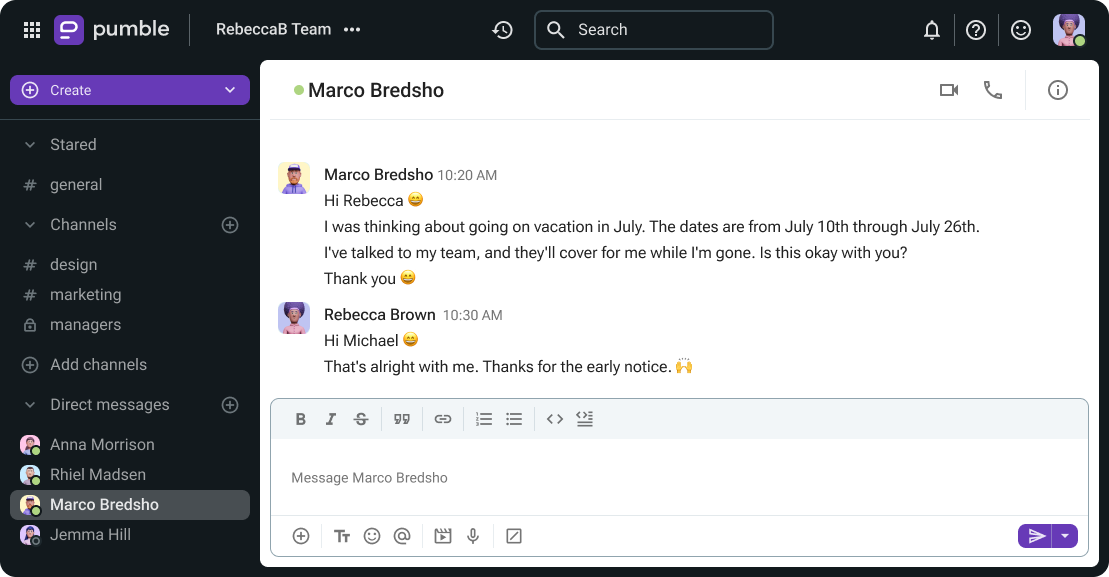
Share your updates seamlessly over Pumble
Step #10: Add extra value
When you’re following up or catching up with a potential client, you may need to provide added value.
As you’re essentially asking something from them — whether it’s their time or attention — it’s always a good idea to offer something in return.
Provide value first, and you will feel more comfortable asking for an update on your previous conversation, a call, or a meeting.
Moreover, you’re more likely to get a favorable response if you lead with a favor.
After all, it’s common to feel urged to give something in return and reciprocate a favor.
For example, you can share a link to a resource they would find valuable or offer free access to a webinar or a course that features solutions to their particular pain points.
💡 Pumble Pro Tip
If you want to learn more about how to successfully ask for a favor in a professional setting, read our in-depth guide on the blog:
Examples of asking for an update professionally
If you’re looking for a more appropriate substitute for “just checking in”, here are some useful phrases and examples to politely ask for an update in an email or over a team communication app.
Communicate better with your team — use Pumble
We’ve covered several common professional update scenarios, from requesting a status update to following up on a job interview.
Asking employees for an update
As a manager, you’ll often have to ask your team members for updates on tasks and projects.
In this example, we have Rebecca asking for a progress update from an employee:
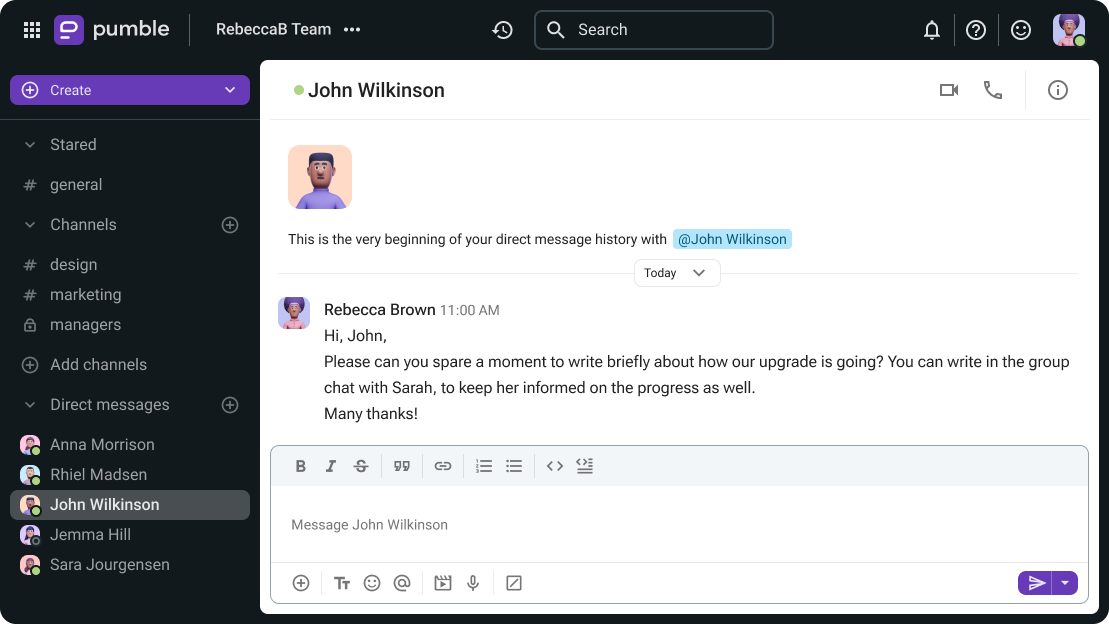
Here are some additional examples of how to ask employees for an update, following the tips we listed earlier.
“Hi Jordan, you mentioned yesterday you were expecting a response/results/update from [XYZ]. Is there any news?”
“Hello Millie, have you received a meeting invitation yesterday? We need your confirmation because we want to find a suitable meeting time that works for everyone. Thanks!”
“Dear Steven,
Have you had a chance to complete the project?
We need it by 5 p.m. because the meeting is at 6 p.m. Let me know if you need help/more time.
Best, John.”
Asking a teammate for an update
Since you spend most of your working time with your colleagues, you will use a more friendly, direct, and less formal tone when addressing them.
Of course, you’ll still ensure to maintain respectful communication.
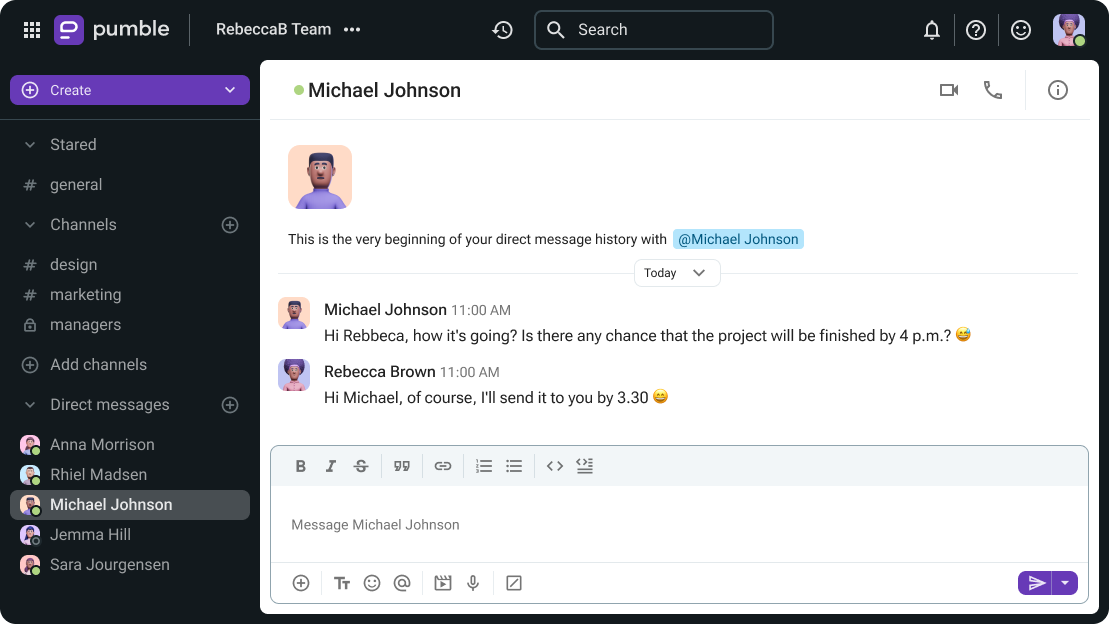
Here are some examples of requesting an update from teammates.
“Laura, I need your help. Please give me your notes from the last meeting, I forgot mine in the car.”
“Hey, Begbie, have you heard back from Mark? Please call me as soon as he confirms the offer.”
“Hello, Judie. Can you please send me the reports about last year’s financial turnover? Thanks, Rick!”
Asking HR for an update after a job interview
Following up after a job interview is the single most effective way to:
- Express your gratitude to the hiring manager and the team that interviewed you for their time and consideration.
- Show your enthusiasm and interest in the company and the position you interviewed for.
- Demonstrate your proactivity.
- Get more information on your application status.
- Improve your chances of getting the job.
Here is an example you can use as inspiration when writing an email asking for an update after a job interview.
“Dear Mark,
Thank you very much for your time last week — it was a great pleasure meeting you all and discussing the X role.
I left our call feeling assured that ABC company shares my values and promotes the work culture I aspire to be part of.
I especially enjoyed speaking about [X job requirement] because it provides an interesting challenge I would like to commit to resolving.
I’m looking forward to your update.
Please let me know if there’s anything else I can provide at this stage of the application process.
Many thanks,
Sam Jones
555-5555
samjones@samjones.com”
Asking potential clients for an update
Client communication calls for a more formal and professional tone.
Here are some examples of what the update requests to potential clients could look like.
“Hello Sally,
Hope this week’s been treating you well.
I really enjoyed our conversation on [industry topic/common pain point] last week.
Hope you found the [X resource] useful in resolving the [Y issue]. Let me know if there’s anything else that can be done on my end to set everything up.
Looking forward to seeing you at [Z industry event]. We can chat more over lunch.
Best,
James”
“Hi Jennifer,
Just listened to your latest podcast episode on [industry topic]. I liked how you encapsulated the key points of [industry strategy].
That’s exactly what we’ve been trying to address with our [strategy/product/service].
Let me know if you’re free to talk about potentially working together sometime this week. I’m available Tuesday through Friday around lunchtime.
Hope we can arrange a call soon.
Cheers,
Emma”
Collaborate with people outside your organization over Pumble
💡 Pumble Pro Tip
If you are looking for additional ways to approach potential clients, check out our guide for writing winning sales emails for your business:
5 Characteristics of an effective update request
Now that you know how to create a perfect update request, let’s summarize the most essential characteristics of an effective update request.
- An effective update request is professional and polite. Keep your tone and style polite and appropriately formal, depending on the nature of your professional relationship with the recipient.
- An effective update request is well-timed. Wait at least 4 to 5 days after the initial contact, email, or meeting before sending an email or a message asking for an update.
- An effective update request is clear. You want the recipients of your messages to understand your intended meaning right away, with no room for multiple interpretations.
- An effective update request is informative. Ensure your update request contains all the crucial details regarding time, place, or objective.
- An effective update request is brief. Remember that your recipients are probably super busy, so try to be concise and concrete in your requests.
Why it is important to politely ask for an update
Workplace communication requires a certain level of politeness and professionalism by default.
Showing respect to the people you communicate with in business and paying attention to the tone and style you use is not only considered common courtesy but imperative in workplace communication.
In addition to meeting standard requirements, update requests call for an even higher degree of professionalism due to their specific nature and purpose.
When we ask someone for an update, it generally implies that we need something from that person — whether that’s their attention, time, or a piece of information.
Speaking of attention, let’s not forget one crucial factor determining how our requests are received — people’s attention spans are shrinking.
This means that your emails and messages have to be:
- Well-structured,
- Polite, and
- Professional.
Otherwise, your requests will not catch the recipient’s attention or get maximum responses. ximum responses.
Pumble makes asking for an update at work easier
When you want to ask for an update at work, use a reliable and powerful business communication app such as Pumble by CAKE.com.
It’s an all-in-one communication tool featuring everything you need to communicate progress updates with your team successfully:
- Use threads or direct messages to keep your update requests more visible and get responses quicker, minimizing the chances of your messages getting lost.
- Ask for an update on behalf of the whole team using channels and let everyone in on the conversations, minimizing misunderstandings.
- For more detailed update conversations, you can start group video conferences or audio calls.
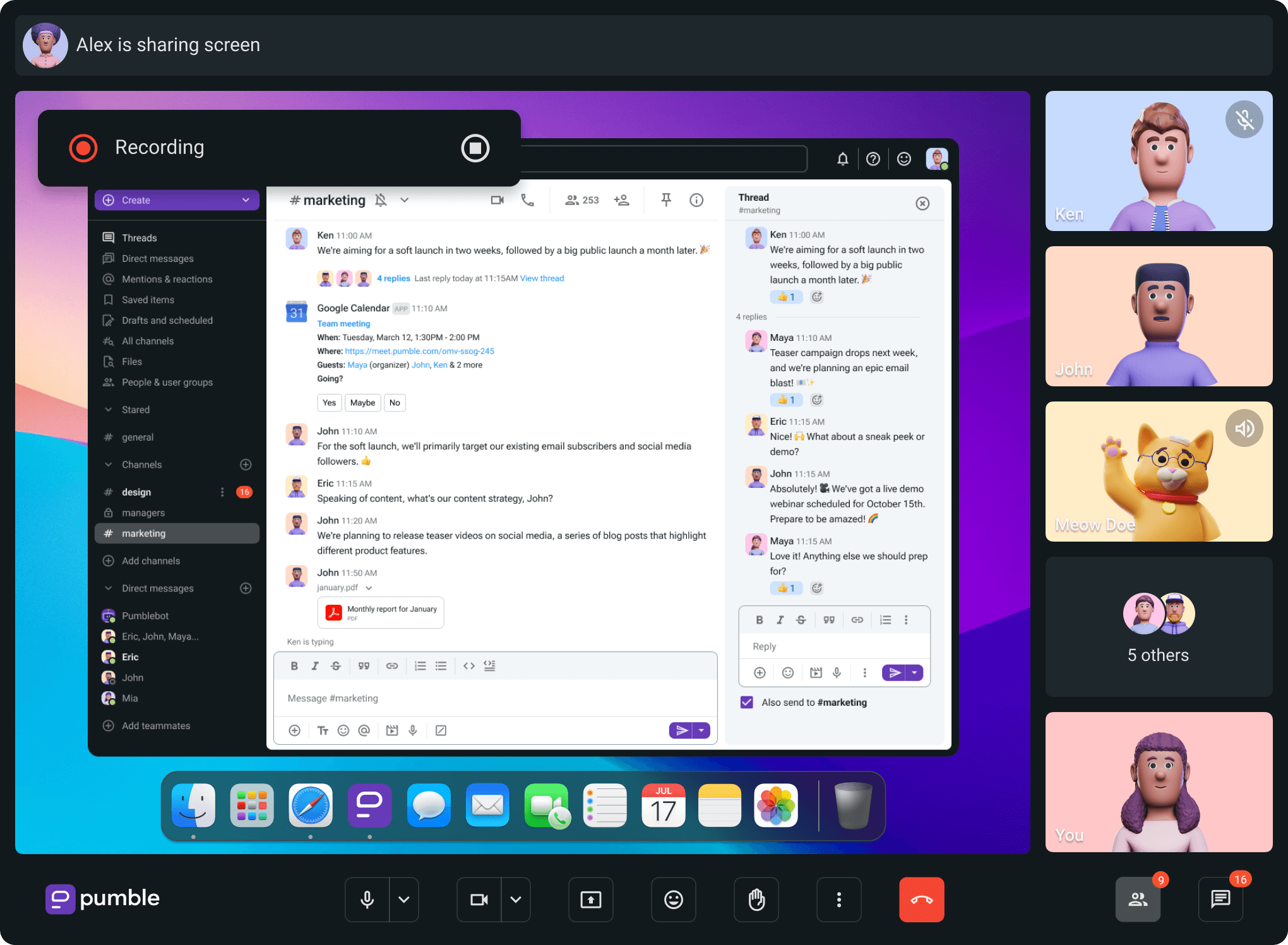
Enhance your update request process today!


